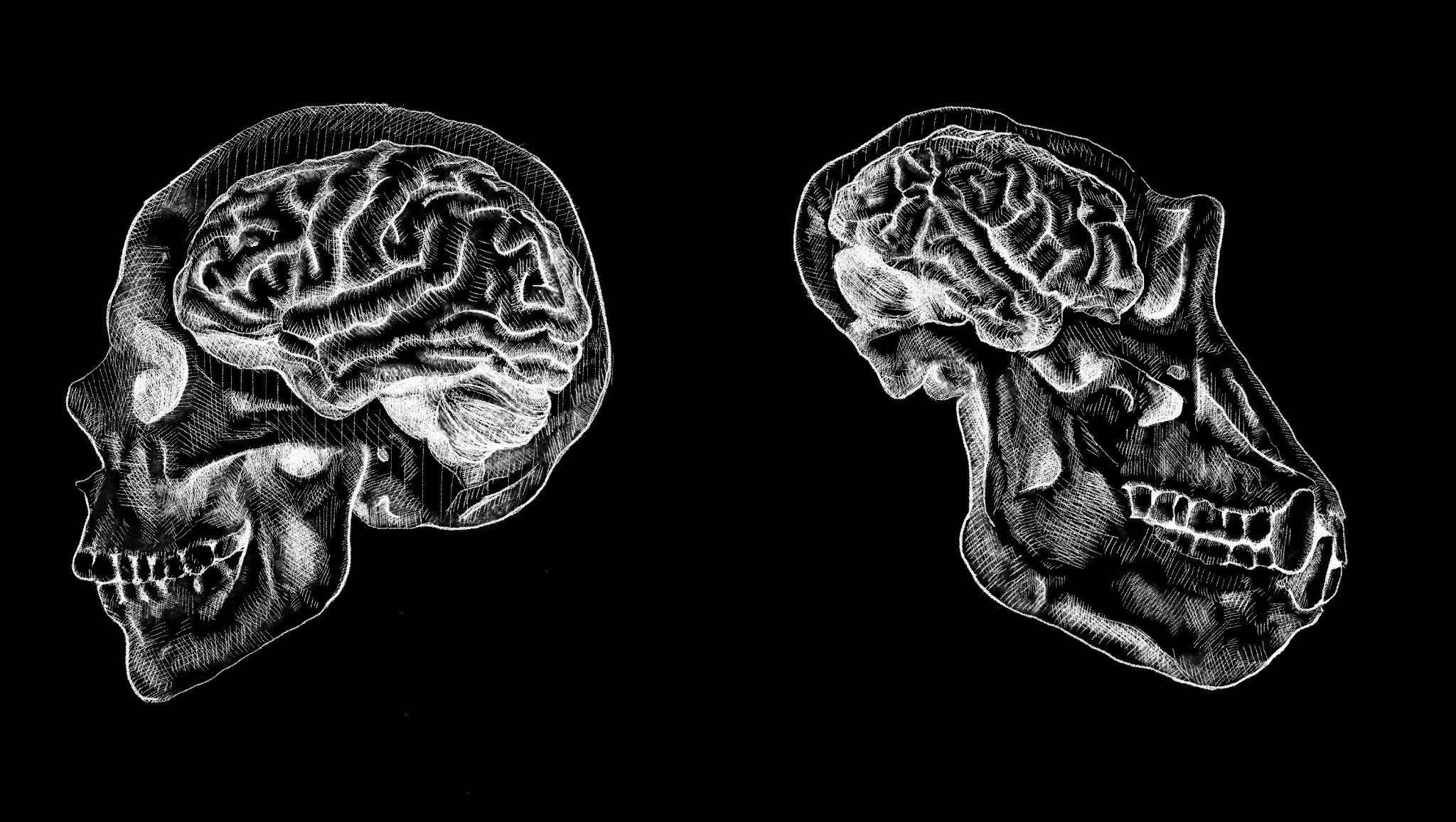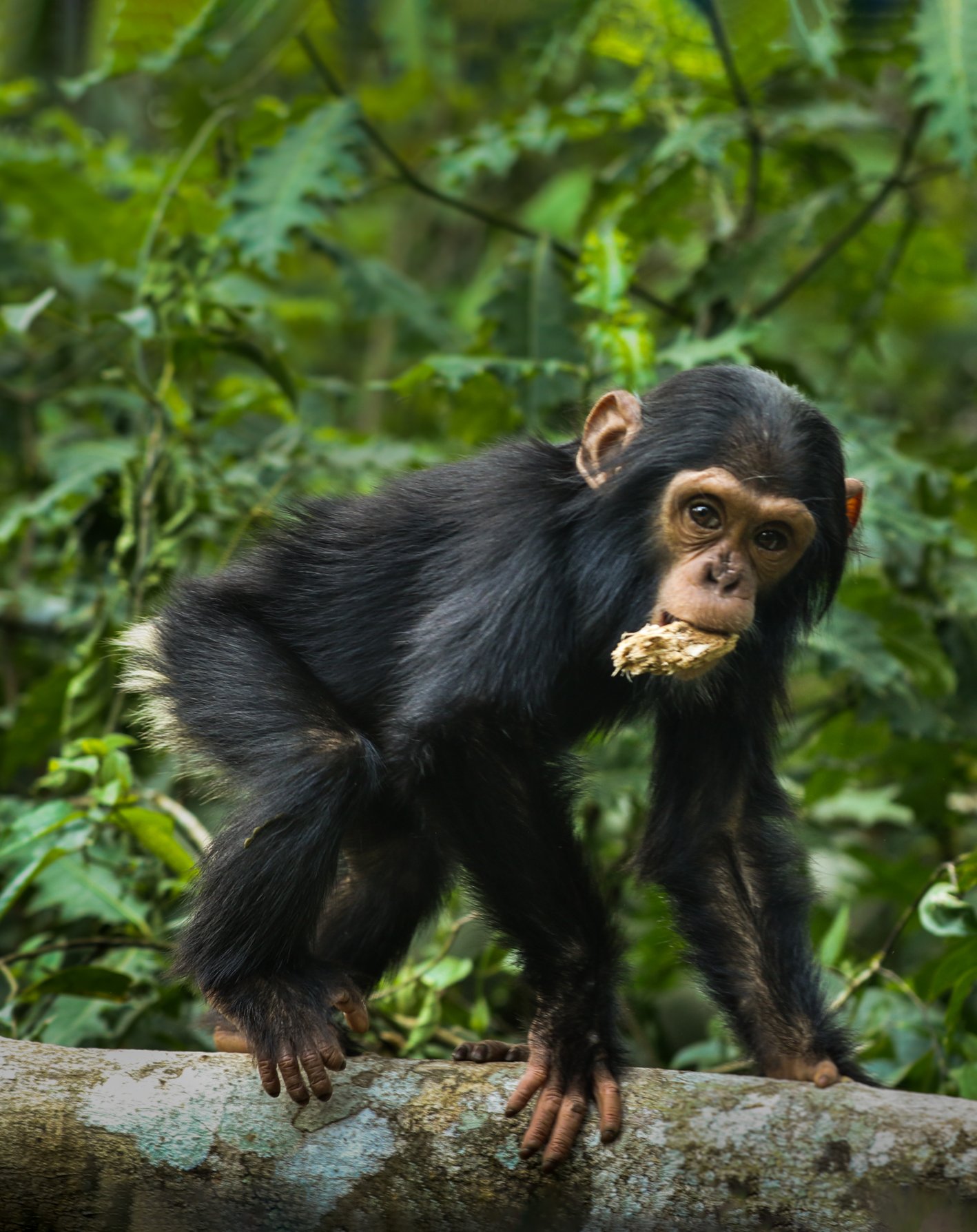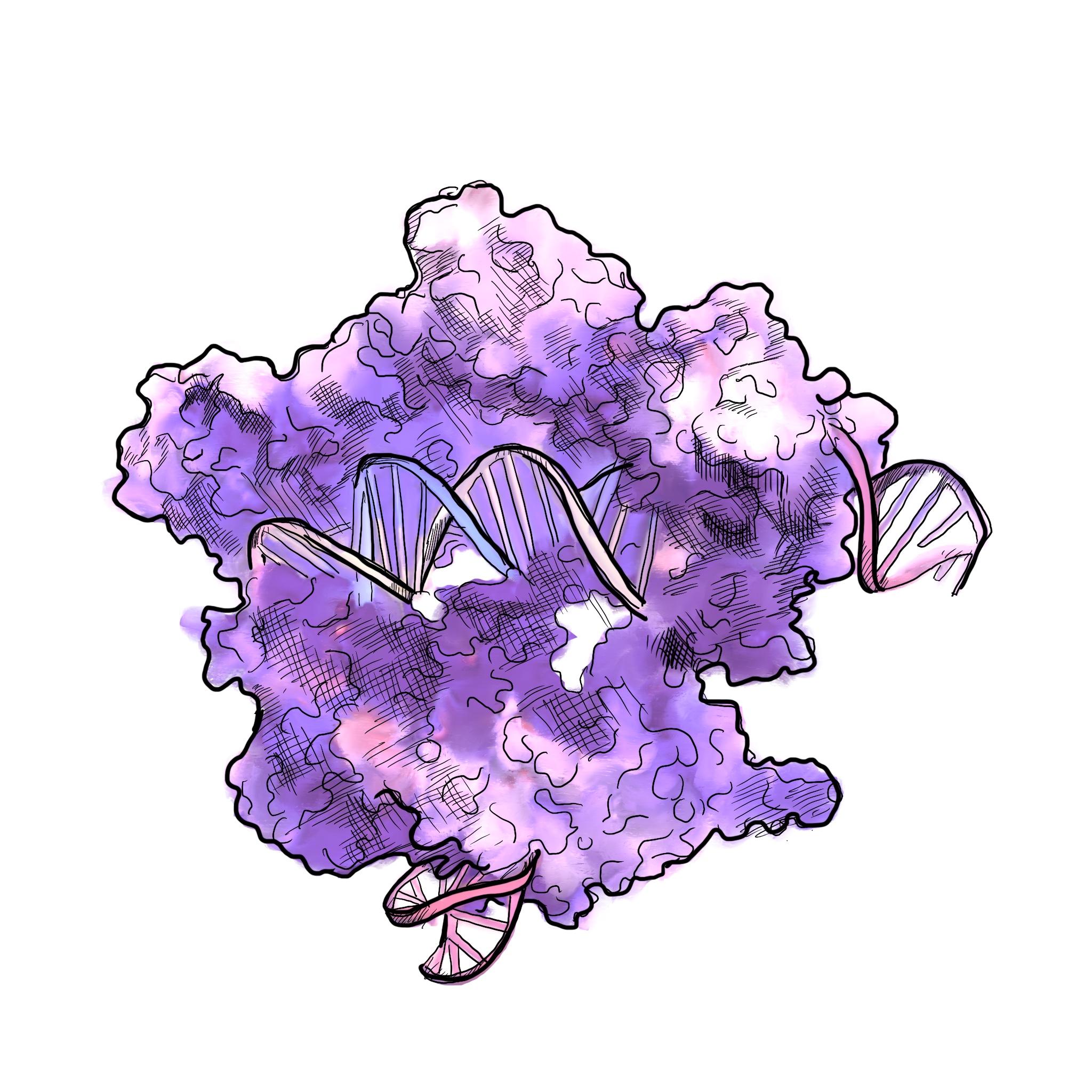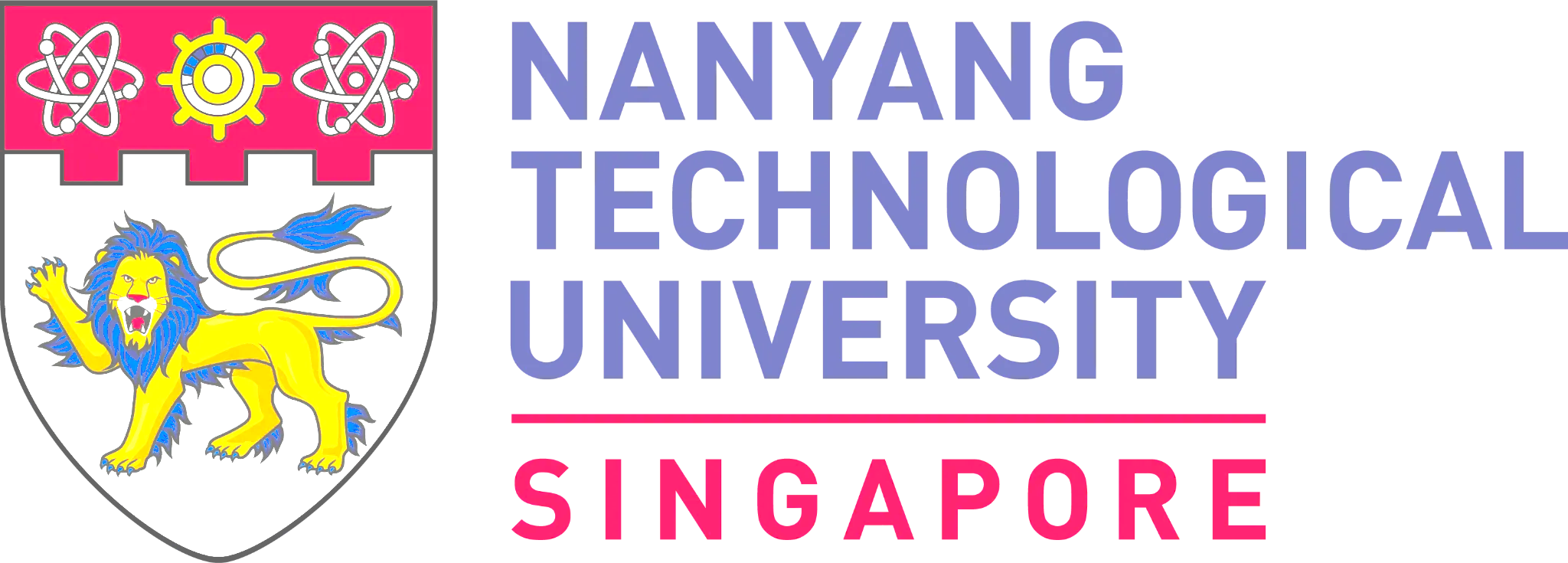
How did evolution build a bigger brain?
Elephants remember. Whales sing. Intelligence blossomed in a thousand specialized forms across the animal kingdom, with each species perfecting its own cognitive niche, hardwired for memory or navigation or song. But only humans possess the kind of cognition that builds civilizations and reaches for the stars. The secret lies in the human brain, which tripled in size over the past 7 million years. Our lab seeks to understand how and why this happened. As we stand at the dawn of machine intelligence, we look back into the past and ask: how did the original biological superintelligence on Earth evolve?

What are the key genes in hominin evolution?
Chimpanzees share over 98 % of our DNA. They are our closest living relatives and offer a unique window into what makes us human. Just as Jane Goodall pioneered the comparison of humans and chimps in the wild, we study their development in the lab, using stem cells instead of field notes. By differentiating these cells into cortical organoids, we can begin to trace how a few genetic changes reshaped the timing, scale, and circuitry of brain development and set our species on a different path.

Organoids + CRISPR screens
We develop high‑throughput tools to map how genetic changes shape human brain development. Our core platform is a CRISPR screening system optimized for cortical organoids, enabling us to perturb thousands of genes in parallel and measure their effects on neural proliferation, fate, and maturation. Human brain expansion required precise regulation of developmental tempo and size: microcephaly leads to intellectual disability, while megalencephaly is linked to autism. Join us to understand how the same changes that gave rise to human intelligence predispose us to autism and other uniquely human vulnerabilities.
